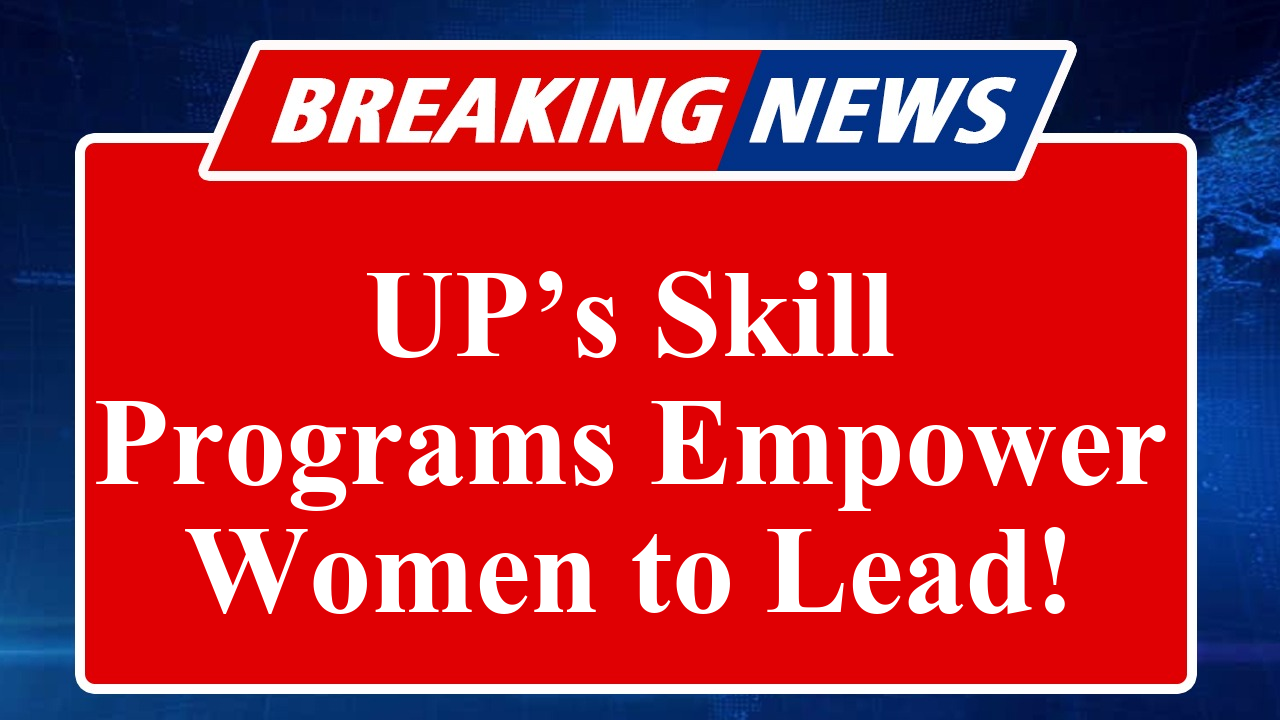UP’s new skill initiatives under the Skill India Mission are empowering women through targeted training, boosting female labour force participation. Programs like NAVYA and Swavalambini focus on vocational skills and entrepreneurship, addressing rural and urban challenges. With rising female participation in apprenticeships and ITIs, these efforts aim to bridge the gender gap and drive economic growth.
Empowering Women Through Skill Development in Uttar Pradesh
Uttar Pradesh is making significant strides in enhancing women’s participation in the workforce through innovative skill development programs under the Skill India Mission. The state’s efforts align with the national goal of increasing the Female Labour Force Participation Rate (FLFPR), which has risen from 23.3% in 2017-18 to 41.7% in 2023-24, according to the Economic Survey. Rural women, in particular, are driving this surge, supported by targeted initiatives designed to equip them with industry-relevant skills.
The Ministry of Skill Development and Entrepreneurship (MSDE) has introduced several women-centric programs, such as the NAVYA initiative, launched in collaboration with the Ministry of Women and Child Development. NAVYA targets adolescent girls aged 16–18 with at least a Class 10 education, offering vocational training in non-traditional roles. This pilot program, rolled out in 2025, aims to break gender stereotypes by training young women in fields like technology and manufacturing. Similarly, the Swavalambini program, launched in February 2025 with the Women Entrepreneurship Platform of NITI Aayog, fosters entrepreneurial mindsets among women in states like Assam, Meghalaya, Mizoram, Uttar Pradesh, and Telangana. It provides mentorship, skill training, and market access to encourage women to start their own ventures.
Under the Pradhan Mantri Kaushal Vikas Yojana (PMKVY), Uttar Pradesh has seen remarkable progress. The scheme has trained over 17.72 lakh women across its phases, with a focus on short-term training, special projects, and recognition of prior learning (RPL). Notably, female participation in apprenticeship schemes has increased from 22.79% in 2024–25 to 25.80% in 2025–26, as reported by the MSDE in the Lok Sabha. The Jan Shikshan Sansthan (JSS) scheme has also been a game-changer, with over 80% of its beneficiaries being women. These programs offer flexible training schedules, safe transport, and post-placement support to accommodate women’s needs.
Uttar Pradesh has established 19 National Skill Training Institutes (NSTIs) and over 300 Industrial Training Institutes (ITIs) exclusively for women, with a 30% reservation for female candidates across all ITIs. These institutes provide training in sectors like healthcare, beauty and wellness, and electronics, aligning with market demands. For instance, over 1.03 lakh women have enrolled in the Field Technician – Computing and Peripherals job role in the electronics sector, showcasing their growing presence in non-traditional fields.
The state’s focus on rural women is evident through initiatives like the Skill Hubs and Special Projects, which tailor training to local demands. These programs address barriers such as limited job opportunities and societal norms that restrict women to low-paying, informal work. By integrating soft skills, digital literacy, and entrepreneurship training, Uttar Pradesh is empowering women to secure better livelihoods and contribute to the state’s economic growth.
Government schemes like Mahila Shakti Kendra, launched in 2017, further support rural women by providing skill development, digital literacy, and employment opportunities in 115 backward districts. The STEP scheme, open to women above 16, offers training in diverse sectors like IT, hospitality, and handicrafts, enabling them to pursue gainful employment or entrepreneurship.
Despite these advancements, challenges persist. The India Skills Report 2025 highlights a concerning decline in women’s employability, projected to drop to 47.5% in 2025 from 50.9% in 2024, compared to a rise for men. This underscores the need for continued efforts to bridge the skill gap, particularly in semi-urban and rural areas. Social barriers, such as gender stereotypes and unpaid domestic responsibilities, also hinder women’s workforce participation. Initiatives like the E4 Model for rural entrepreneurship and the PROGRES Model for urban job readiness are proposed to address these issues, offering mentorship, childcare support, and flexible work arrangements.
Uttar Pradesh’s commitment to skilling women is a step toward gender equality and economic empowerment. By aligning training with industry needs and fostering an inclusive ecosystem, the state is paving the way for women to thrive in diverse sectors, from technology to entrepreneurship, contributing significantly to India’s $30 trillion economy target by 2047.
Disclaimer: This article is based on recent news, reports, and government sources, including the Economic Survey 2023-24, MSDE announcements, and the India Skills Report 2025. Information is accurate as of August 5, 2025, and sourced from reliable platforms like nationalskillsnetwork.in, indiatoday.in, and ddnews.gov.in. Readers are advised to verify details with official sources for the latest updates.

